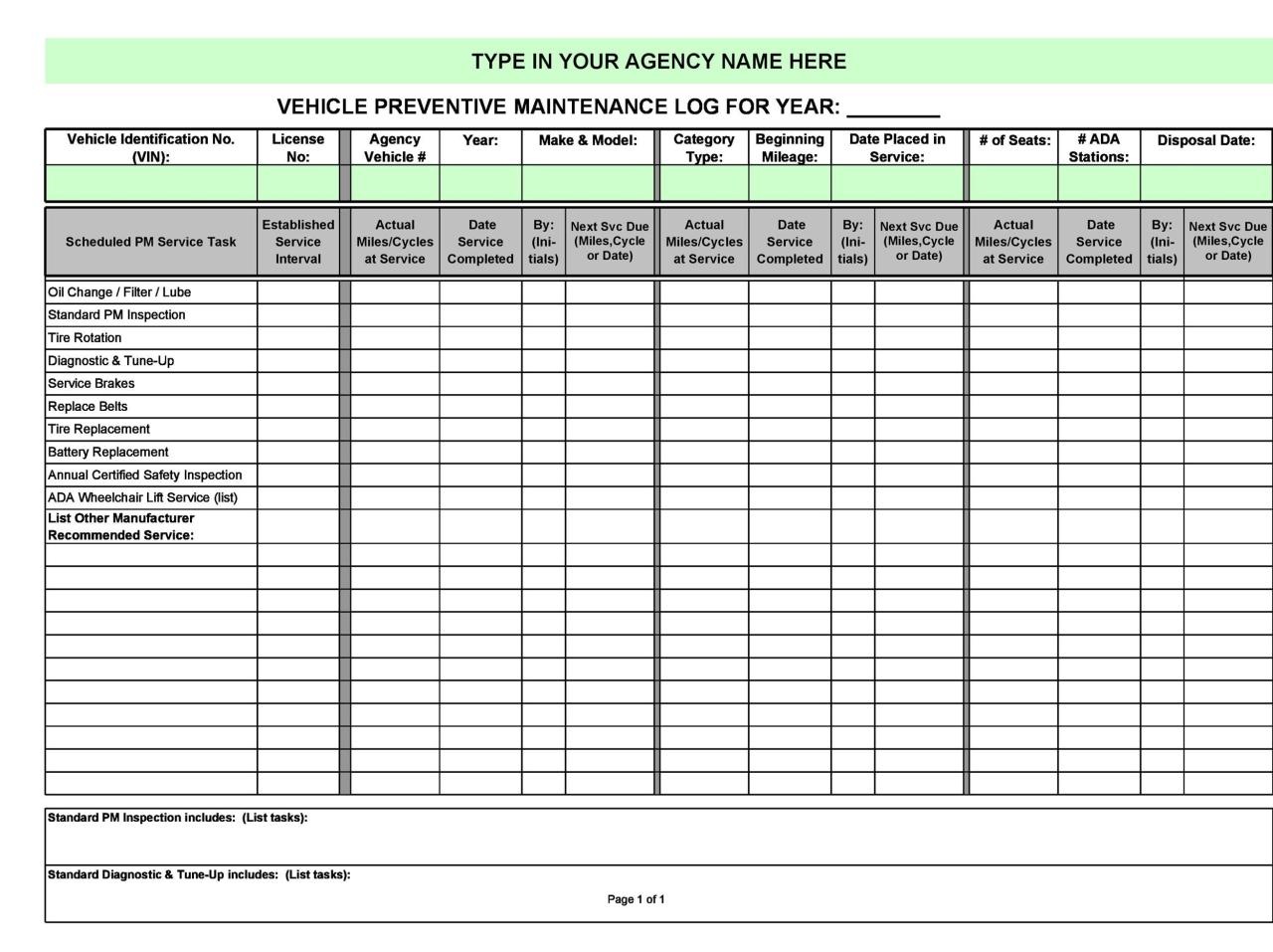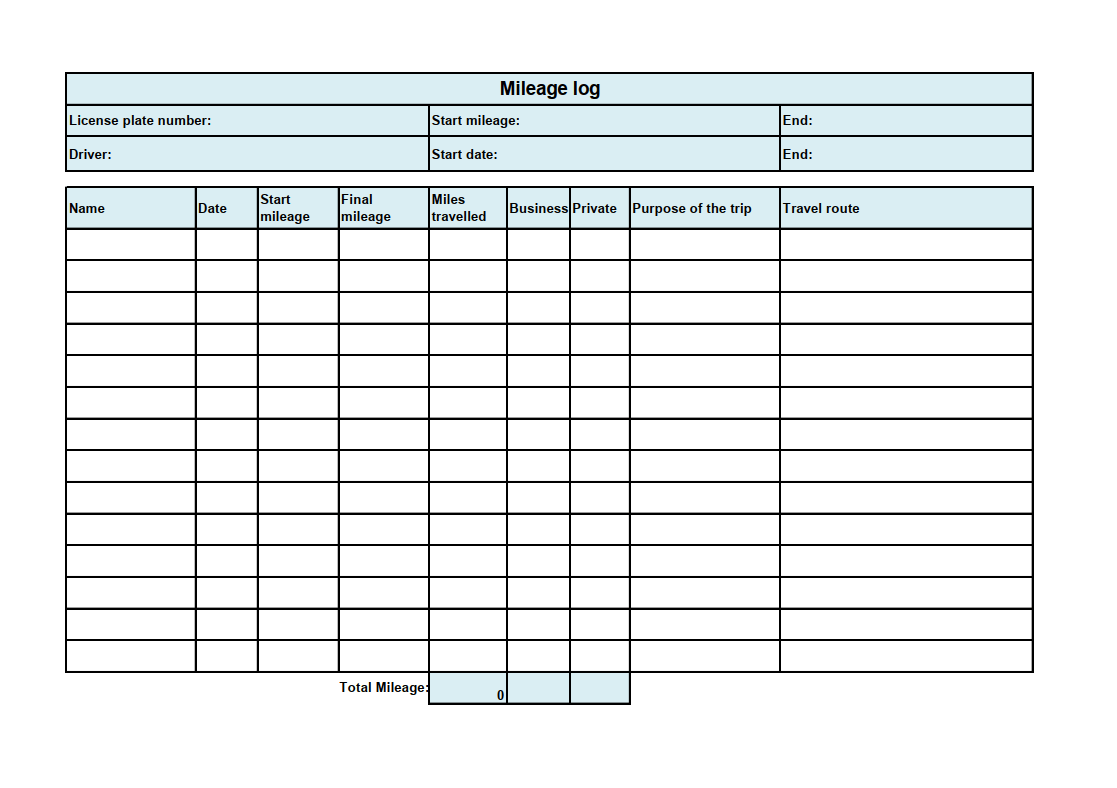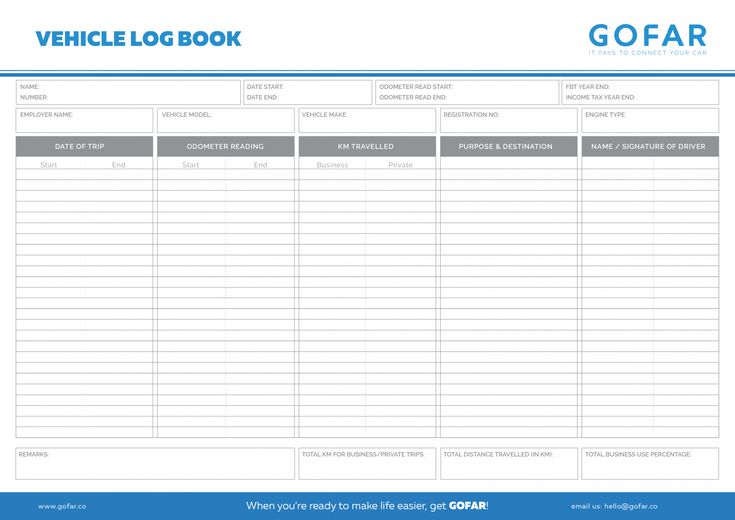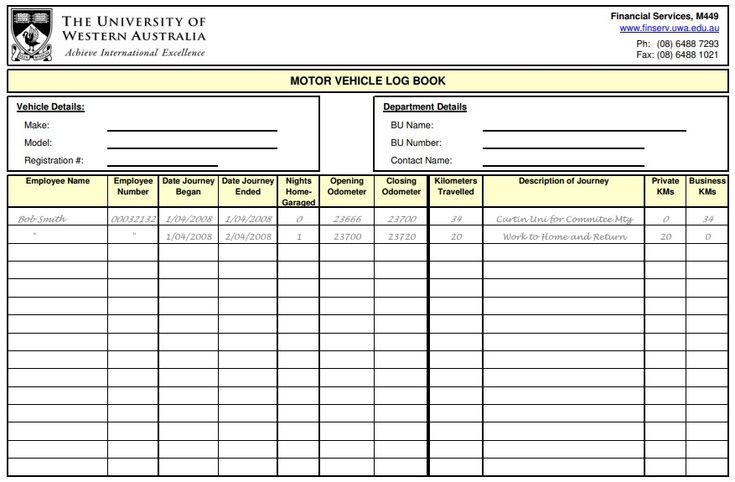Introduction to Excel Printable Vehicle Log Book Template

An Excel printable vehicle log book template is a useful tool for individuals or businesses to keep track of their vehicle usage and maintenance. This template provides a structured format for recording important information about each trip, such as the date, starting and ending mileage, purpose of the trip, and any maintenance or repairs performed.
Using an Excel printable vehicle log book template offers several benefits. Firstly, it helps in maintaining accurate records of vehicle usage, which can be helpful for tax purposes or reimbursement claims. Secondly, it allows for easy tracking of maintenance and repairs, ensuring that the vehicle is properly maintained and any issues are promptly addressed.
There are various situations where this template can be useful. For individuals, it can be used to track personal mileage for tax deductions or to keep a record of business-related trips. For businesses, it can be used to monitor the usage of company vehicles, track expenses, and schedule regular maintenance.
Additionally, rental car companies or fleet management companies can use this template to keep track of their vehicle inventory and monitor their condition.
Importance of Keeping a Record of Vehicle Usage and Maintenance
Keeping a record of vehicle usage and maintenance is crucial for several reasons. Firstly, it helps in monitoring and managing expenses related to the vehicle. By tracking mileage and fuel consumption, individuals or businesses can identify areas where they can reduce costs, such as optimizing routes or identifying fuel-efficient vehicles.
Furthermore, having a record of maintenance and repairs allows for better management of the vehicle’s condition. Regular maintenance can help prevent breakdowns and prolong the lifespan of the vehicle. By tracking maintenance activities, individuals or businesses can ensure that necessary services, such as oil changes or tire rotations, are performed on time.
In addition to cost and maintenance benefits, keeping a record of vehicle usage is important for tax purposes. For individuals who use their vehicle for business purposes, accurate mileage records are necessary to claim tax deductions. Similarly, businesses that provide vehicles to employees may need to track usage for tax or reimbursement purposes.
In conclusion, using an Excel printable vehicle log book template is a convenient and efficient way to keep track of vehicle usage and maintenance. It provides a structured format for recording important information, helps in managing expenses, ensures proper maintenance, and provides accurate records for tax or reimbursement purposes.
Features of an Excel Printable Vehicle Log Book Template

An Excel Printable Vehicle Log Book Template is a useful tool for keeping track of important information about your vehicle. It allows you to record details such as mileage, fuel usage, maintenance, and repairs. Here are some essential features that should be included in this template:
1. Basic Vehicle Information
- Include fields to record the make, model, year, and registration number of the vehicle.
- Provide a section to input the vehicle’s purchase date and purchase price.
2. Mileage Tracking
- Include a column to record the date of each trip or journey.
- Have a field to input the starting and ending mileage for each trip.
- Automatically calculate the total distance traveled for each trip.
3. Fuel Usage
- Include a section to record the date of each refueling.
- Have fields to input the odometer reading, the number of liters or gallons of fuel added, and the cost per unit.
- Automatically calculate the total fuel cost for each refueling and the average fuel consumption.
4. Maintenance and Repairs
- Include a section to record the date, description, and cost of each maintenance or repair task.
- Have fields to input the mileage at the time of the maintenance or repair.
- Provide a column to add any notes or comments regarding the maintenance or repair.
5. Expenses
- Include a section to record other expenses related to the vehicle, such as insurance, parking fees, and tolls.
- Have fields to input the date, description, and cost of each expense.
Customizing the Template
To customize the Excel Printable Vehicle Log Book Template to suit specific needs, follow these steps:
- Open the template in Microsoft Excel or any other compatible spreadsheet program.
- Edit the existing columns or add new columns to track additional information.
- Modify the formulas if necessary to accommodate the changes made.
- Format the cells and columns as desired to improve readability.
For example, if you want to track the maintenance schedule of your vehicle, you can add a column for the next maintenance due date and set up conditional formatting to highlight dates that are approaching.
Remember to save your customized template as a new file to avoid overwriting the original template.
How to Use an Excel Printable Vehicle Log Book Template

To effectively use an Excel Printable Vehicle Log Book Template, follow these step-by-step instructions:
1. Download and Open the Template
Start by downloading the Excel Printable Vehicle Log Book Template from a reliable source or website. Save the template file to a location on your computer that is easily accessible. Once downloaded, locate the file and double-click on it to open it in Microsoft Excel or a compatible spreadsheet program.
2. Enter Vehicle Details
After opening the template, you will see various columns and rows. Begin by entering the necessary vehicle details such as the make, model, and registration number. You can typically find this information on your vehicle registration documents or insurance paperwork.
This step is crucial as it helps in identifying the specific vehicle for future reference.
3. Record Fuel Consumption
To accurately track fuel consumption, locate the designated column for fuel entries in the template. Each row represents a separate entry for a specific date or time period. Enter the relevant information, such as the date of fuel purchase, the quantity of fuel purchased, and the cost per unit.
You can also include additional information such as the fuel station name or location. By consistently recording this data, you can monitor your vehicle’s fuel efficiency and expenses over time.
4. Track Mileage
The template should have a dedicated column or section for recording mileage information. Enter the vehicle’s current mileage at the beginning and regularly update it as you use your vehicle. This will help you keep track of how many kilometers or miles your vehicle has traveled.
Additionally, you can calculate the mileage between each fuel entry to determine the fuel efficiency of your vehicle.
5. Maintain Maintenance Records
In order to keep track of maintenance activities, the template may have a section or columns dedicated to recording maintenance details. Enter the date of maintenance, the type of maintenance performed (such as oil change, tire rotation, or brake replacement), and any associated costs.
This will help you stay on top of your vehicle’s maintenance schedule and expenses.Remember to save the template regularly to ensure your data is not lost. By following these steps, you can effectively use an Excel Printable Vehicle Log Book Template to track and manage your vehicle’s information, fuel consumption, mileage, and maintenance records.
Benefits of Using an Excel Printable Vehicle Log Book Template

Using an Excel Printable Vehicle Log Book Template offers several advantages over a physical log book. This digital format provides convenience, accuracy, and efficiency in tracking vehicle-related information.
Convenience and Accessibility
- The Excel Printable Vehicle Log Book Template can be easily accessed and updated on any device with Excel software. This allows for flexibility and convenience, as you can input and review data from your computer, tablet, or smartphone.
- With a digital log book, you no longer have to carry around a physical book and worry about misplacing or damaging it. The template can be stored securely on your device or cloud storage, ensuring that your data is always accessible.
Expense Tracking and Fuel Efficiency Calculation
- The template includes sections for recording expenses such as fuel, maintenance, and repairs. By consistently inputting this information, you can easily track and analyze your vehicle-related expenses over time.
- One of the key benefits of using the Excel Printable Vehicle Log Book Template is its ability to calculate fuel efficiency. By recording the distance traveled and the amount of fuel consumed, the template automatically calculates and provides you with accurate fuel efficiency data.
- Having access to this data can help you identify any changes in fuel efficiency, allowing you to take necessary measures to improve it. It also enables you to monitor the impact of different driving habits or maintenance actions on fuel consumption.
Identification of Patterns and Trends
- By consistently recording data in the log book template, you can identify patterns and trends in your vehicle usage. This includes analyzing factors such as distance traveled, fuel consumption, and maintenance costs.
- The template allows you to generate reports and charts based on the recorded data, providing visual representations of your vehicle usage. This can help you identify any irregularities or trends that may require attention.
- For example, you may notice a spike in fuel consumption during a particular month. By analyzing the data, you might discover that it coincides with a change in driving habits or a need for maintenance.
Tips for Maintaining an Excel Printable Vehicle Log Book Template

Maintaining an Excel Printable Vehicle Log Book Template is essential to ensure accurate and consistent recording of vehicle information. Here are some tips to help you keep your log book up to date and organized.
Regularly Updating Log Book Entries
To ensure that your log book is always up to date, it is important to establish a regular schedule for updating entries. Set aside dedicated time, such as once a week or once a month, to review and record the necessary information.
This will help prevent any gaps or inconsistencies in your records.
- Make it a habit to record all relevant details related to each trip or vehicle usage. This includes the date, starting and ending mileage, purpose of the trip, and any additional notes or observations.
- Consider using a digital calendar or reminder system to prompt you to update your log book at regular intervals.
- If multiple drivers are using the vehicle, establish a clear process for them to submit their trip details and ensure that these are promptly recorded in the log book.
Ensuring Accuracy and Consistency
Accuracy and consistency in recording information is crucial for the effectiveness of your log book. Follow these tips to ensure the reliability of your records:
- Double-check all entries for accuracy before finalizing them. Pay attention to details such as mileage readings and trip dates.
- Use standardized formats and terminology to maintain consistency across all entries. This will make it easier to analyze and compare data over time.
- Consider including specific fields or categories in your log book template to capture relevant information, such as fuel expenses or maintenance records.
- Regularly review your log book for any discrepancies or errors. Correct any inaccuracies promptly to maintain the integrity of your records.
Organizing and Storing Log Book Data
Proper organization and storage of log book data will ensure easy retrieval and accessibility when needed. Here are some tips to help you keep your log book data well-organized:
- Create a separate folder or file for your log book template and all related documents. This will help keep everything in one place and easily accessible.
- Consider using cloud storage or online platforms to store your log book data. This will provide backup and ensure that you can access your records from anywhere.
- Regularly backup your log book data to prevent any loss or damage.
- Establish a naming convention for your log book files to make it easier to identify and retrieve specific records.
Remember, maintaining an accurate and up-to-date log book is not only important for record-keeping purposes, but it can also help with tax deductions, vehicle maintenance, and overall cost management. By following these tips, you can ensure that your Excel Printable Vehicle Log Book Template remains a valuable tool for managing your vehicle-related information.
